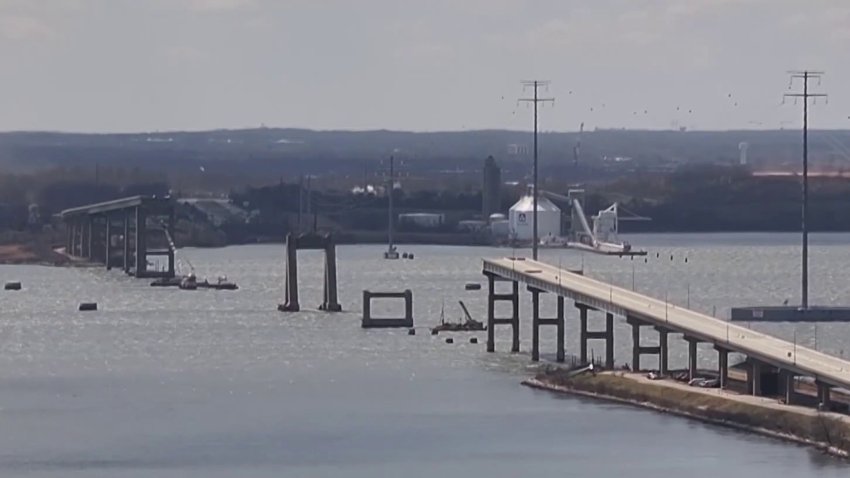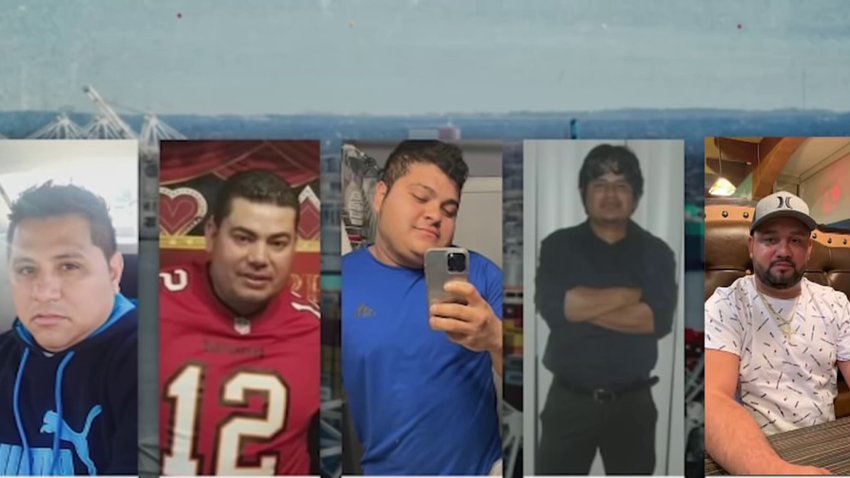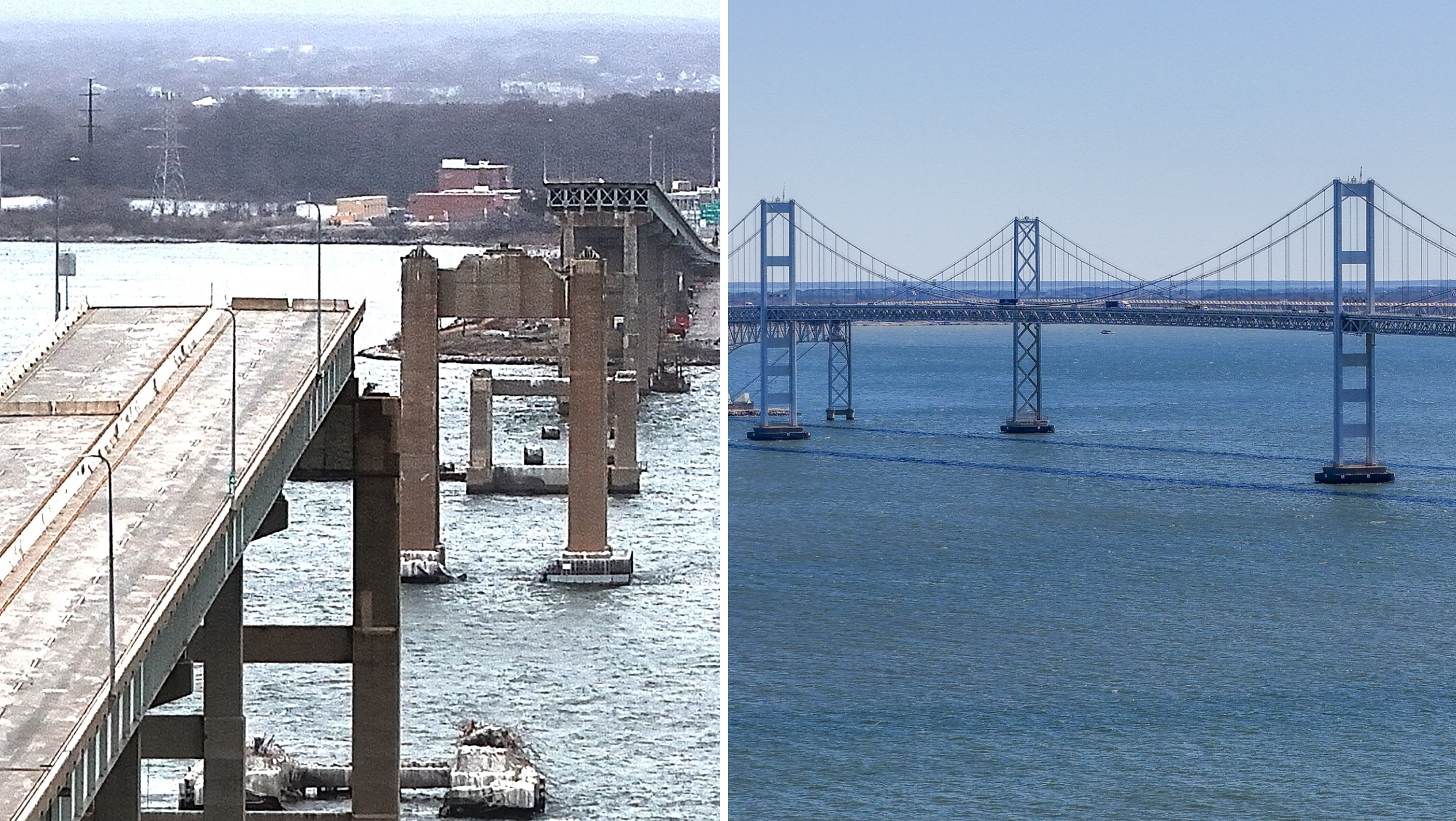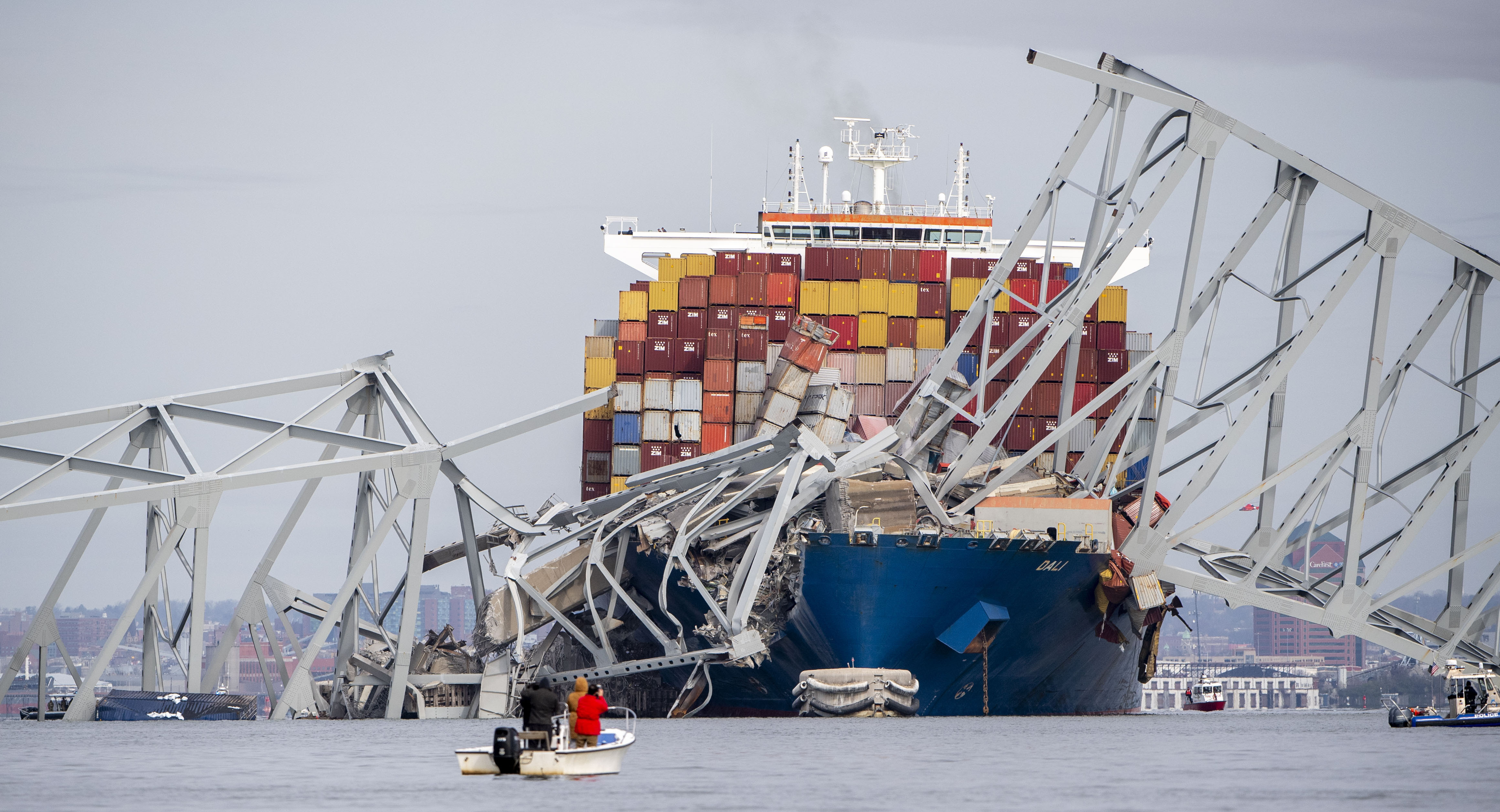It seemed like any other night. Eight Hispanic workers took a break during their shift on the Francis Scott Key Bridge in Baltimore, Maryland, when the unimaginable occurred.
At 1:28 a.m. on March 26, 2024, the cargo ship Dali struck the historic bridge, causing it to collapse almost instantly. The workers, who were inside their vehicles, plummeted into the cold waters of the Patapsco River. Tragically, six of them lost their lives, while only two survived.
Police were able to stop traffic moments before the bridge collapse, but they didn’t alert the road crew in time.
One year after the tragedy, loved ones remember that day as if it were yesterday.
We've got the news you need to know to start your day. Sign up for the First & 4Most morning newsletter — delivered to your inbox daily. Sign up here.
"At first, I had faith he was alive, but when I was there at 1:30 a.m., everything changed," said Carlos Suazo, the brother of Maynor Suazo, one of the victims.

"I had to tell the family that the climate wasn't the most suitable for a human being to survive for too long," he added in an interview with Telemundo 44.
Suazo expressed that his anguish lasted more than a week because it took authorities 11 days to recover his older brother's body.
"Having to inform the family in Honduras that there's no news is an ordeal. Not only for my family, but also for the families of my brother's colleagues," he emphasized.

The relief of discovering his remains came with the harsh reality of organizing funeral services across two countries.
"We buried him on May 8. It was difficult, having him in the funeral home for almost a month. We held a wake here (in the U.S.), and then the privilege was to bury him in the town where we were born, Azacualpa Valle Santa Bárbara (Honduras)," Suazo said.
Like him, the families of the other five workers — Alejandro Hernández Fuentes, Dorlian Ronial Castillo Cabrera, Carlos Daniel Hernández Estrella, Miguel Ángel Luna González and José Mynor López — faced a similar process.
Originally from Mexico, Guatemala, El Salvador and Honduras, they all worked for Brawner Builders.
"The families of the six men who died while working on the bridge are still grieving the unimaginable loss of their husbands, fathers, sons, brothers, and uncles, while the two survivors are trying to rebuild their lives," the attorneys representing all the families said in a statement Tuesday.
“Everyone working on the scene shared that same priority — those men we lost in the water,” Baltimore Mayor Brandon Scott said during Wednesday's ceremony, recalling the horror that followed the collapse.
“While this day is a day of mourning, it is not a day of grief alone,” Scott said. “It is a day to commemorate the strength, resilience and that Baltimore grit that we showed the world in that moment.”

Why did the bridge collapse?
Local and federal agencies are working to understand the reasons behind the bridge collapse. Preliminary investigations indicate that the incident was primarily caused by the container ship, the Dali, losing power.
A report released last year by the National Transportation Safety Board (NTSB) revealed that the Dali experienced a power outage while undergoing maintenance approximately 10 hours before leaving the Port of Baltimore. The outage was caused by a crew member mistakenly closing a valve in the exhaust system, which led to flooding of the ship's engine.
After departing from the port on March 26, the ship lost power again and subsequently crashed into one of the bridge's support columns, resulting in the bridge collapsing within seconds.
The ship, which was en route from Baltimore to Sri Lanka, issued a mayday call just in time for police to stop traffic. However, that was too late to prevent the tragic deaths of workers who were repairing potholes on the bridge.
Both the families' attorneys and the NTSB agree that the incident was "entirely preventable."
In a report released last Thursday, the agency stated that Maryland authorities had not performed a vulnerability assessment before the incident, despite federal regulations mandating such assessments.
During a conference, NTSB Chair Jennifer Homedy mentioned that if the Maryland Transportation Authority (MDTA) had completed this assessment, the federal agency could have developed a strategy to prevent the tragedy.
Consequently, the agency recommended that 30 owners of 68 bridges across 19 states conduct vulnerability assessments to evaluate the risk of bridge collapse due to maritime collisions.
After the collapse, the Port of Baltimore was closed for months as debris blocked its main shipping channel. It made an impressive rebound during the second half of 2024, but now the Trump administration’s tariffs could threaten its ongoing recovery.
Reconstruction plans continue
Last month, Maryland officials revealed the designs for a new bridge in Baltimore. This new bridge will be taller than its predecessor and will be better protected against potential impacts from ships. The estimated cost for the project is $1.7 billion, with a projected completion date of 2028.
In August, the state awarded a $73 million contract to Kiewit, a prominent construction and engineering firm, for the first phase of the reconstruction.
Officials stated that the project will proceed in two phases, with the initial phase focusing on design work and other necessary preparations before construction begins. Maryland Gov. Wes Moore promised to “employ many Marylanders” throughout the process.
Maryland Transportation Secretary Paul Wiedefeld noted that the design will incorporate the latest dock protection technology, which has become increasingly important as ships grow larger and carry more cargo.
The bridge will be constructed to be taller, allowing for more clearance. Wiedefeld noted that the plans were designed with the project's budget and construction timeline in mind.
The federal government has agreed to fund the entire reconstruction cost. Recently, Congress passed a spending bill that includes provisions for financing the project.
As authorities continue to investigate the cause of this tragedy and prepare for the bridge's reconstruction, the families affected are demanding justice.
Carlos Suazo, the younger brother of Maynor Suazo, is advocating for the implementation of stricter safety procedures and regulatory protocols.
"Since we've already suffered this experience, let's hope another family doesn't have to go through what we did," he emphasized.
"Although nothing will bring the men who died that night back to their families, we will do everything possible to hold the owners and operators of the Dali accountable for their responsibility in this disaster," concludes the statement from the law firms representing the families of the deceased and the survivors.
However, Suazo affirms that, although his brother is gone physically, his memory lives on.
"Maynor has not died for us," he said. "We bury a body, but while we remember him, he does not die."
Sign up for our free deep-dive newsletter, The 4Front, to get standout News4 stories sent right to your inbox. Subscribe here.



